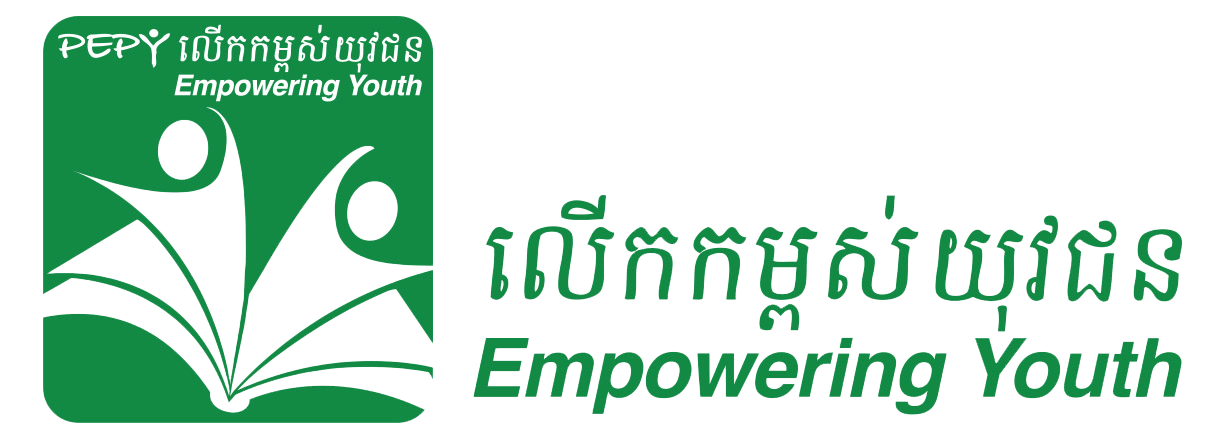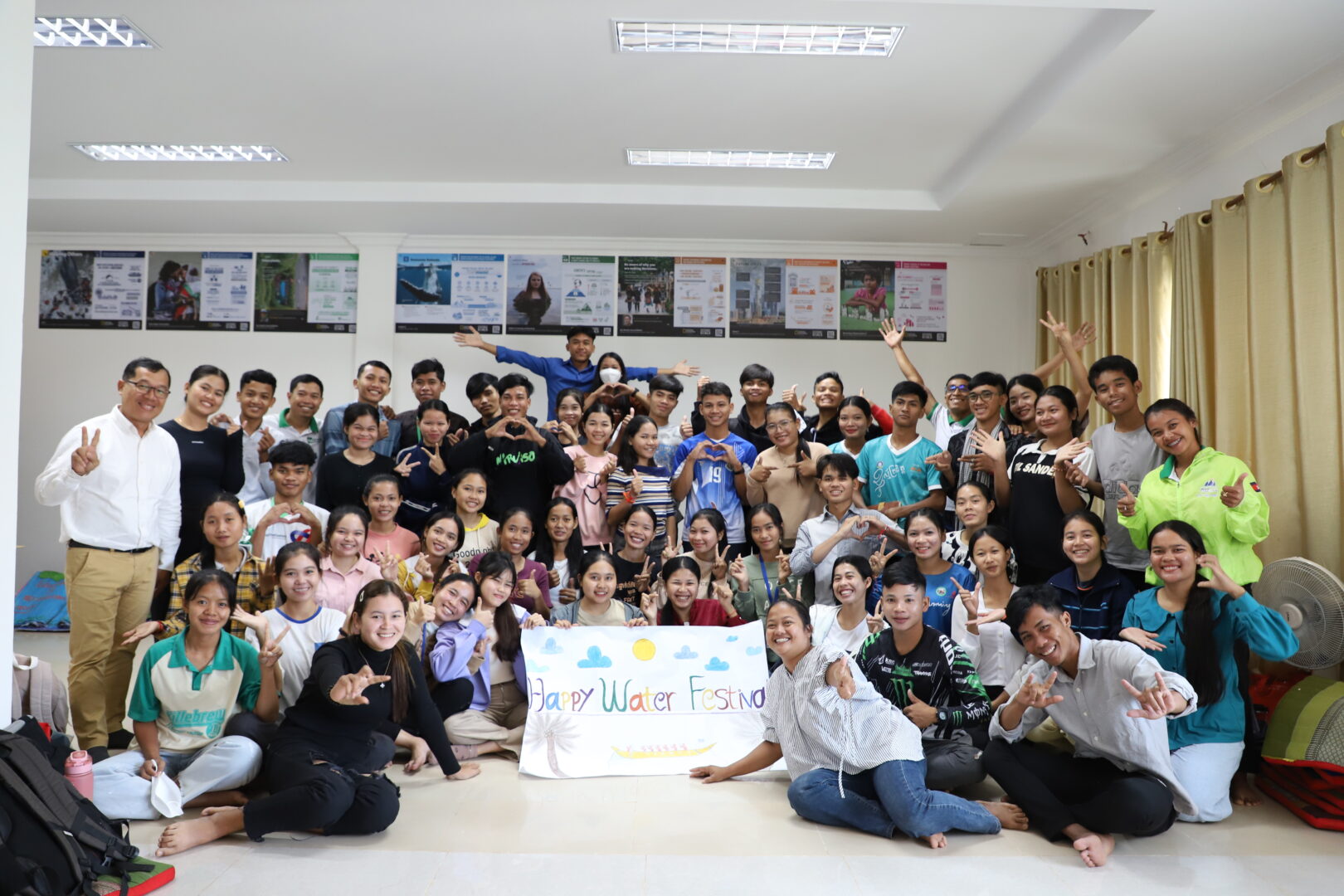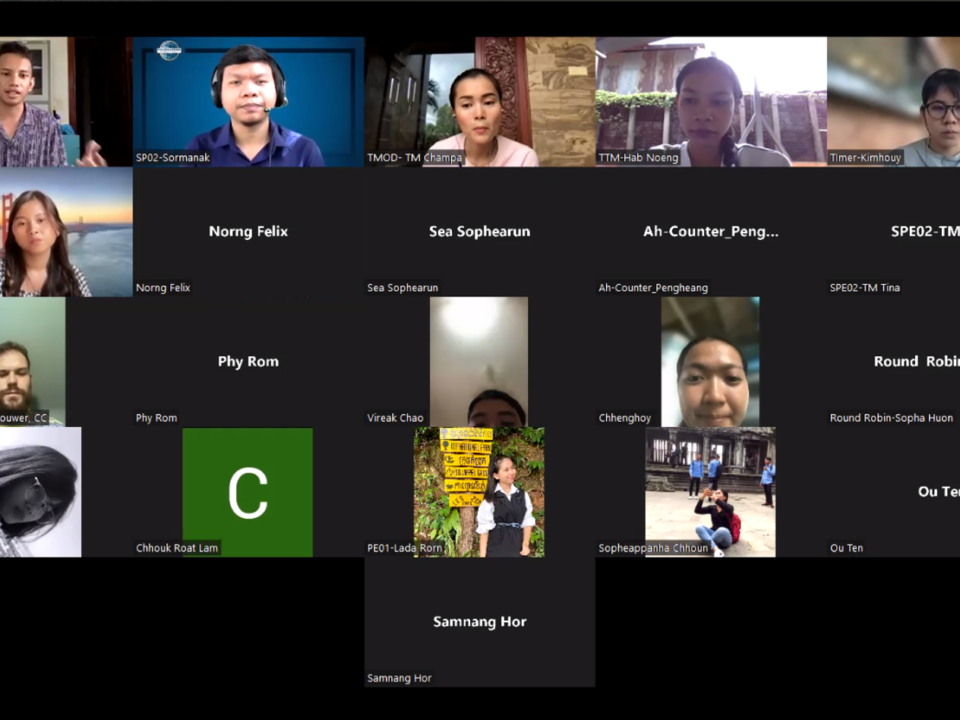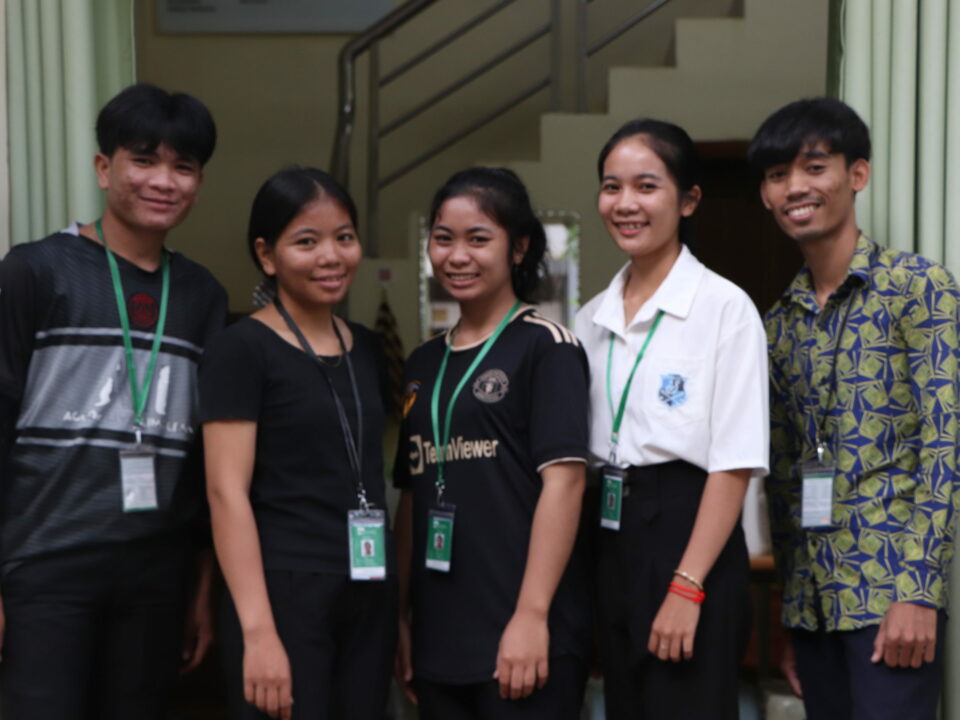TEDxBKK
February 22, 2010PEPY Philosophies
February 26, 2010It has been fascinating to watch Chanleas Dai and Prasat Knar School Support Committees work through their first respective Primary School Development Plans (PSDPs).
As part of the PSDP methodology, we’ve been working for the past 3 months with each school to build, strengthen, and train a School Support Committee (SSC), much like a Parent-Teacher Association Board in the United States.
The School Support Committees now meet once a month, and have been working with the PEPY Team to learn about the Ministry’s policies of Child Friendly Schools, Education Law, Identifying Root Causes, Strategic Planning, and Budgeting. This month we’re beginning the fun part: writing and implementing a School Development Plan based on the particular needs of each school.
One of the most interesting things about working with PSDP is seeing the differences between Prasat Knar, a newly supported primary school, and Chanleas Dai Primary, where we have been working for over 4 years. Although both schools are receiving the same training, workshops, and attention as part of the PSDP process, the problems they are identifying and how they choose to solve them are remarkably different.
Of course, their problems ARE different. Many of the things that Prasat Knar wants, Chanleas Dai already has. And in addition to having a beautiful library, more highly trained teachers, clean water, and school gardens, Chanleas Dai is also a different village, 20 kilometers away with unique community problems.
As part of the PSDP approach, each school is offered Standard Support (uniforms, first aid kits, water filters, and a wide variety of training and resources), and also works with PEPY and the SSC on a School Development Plan for each of the three years they participate in the program. During the planning process, the groups have the opportunity to identify problems and plan solutions of their own. As the PSDP approach is focused on initiating sustainable changes, the idea is that the community and SSC are responsible for as much of the implementation and costs of School Development Plan projects as possible. While PEPY can help with advocacy, training, ideas and small amounts of resources, the SSC is responsible for putting these changes in place.
At Prasat Knar, a remote school near the Odor Meanchey border, the main problems the SSC identified were a lack of water, poor literacy skills among students, and a lack of textbooks and resources. The SSC is already moving forward on finding creative ways to solve these problems. Through a community donation scheme, they are raising over 300 dollars to move 100 truckloads of dirt, creating a pond that will provide water for toilets and gardens at the school. PEPY’s contribution will be about 140 dollars, less than half of what the school will collect. For a library, the community is looking for ways to raise money to subsidize a volunteer teacher, or to have approval from the District for one teacher to work part-time as a librarian. We’ll provide a one-time room renovation, books, and library training, and the SSC will provide follow-ups and commit to funding a librarian. For textbooks, we’re working with other schools in the area and the District to find extra copies. If that’s not possible, the school and PEPY will work together to provide extra textbooks.
At Chanleas Dai, the SSC is focusing on providing life skills training for students, creating resource workshops for teachers, and making child friendly spaces for students to learn and play outside of class time. It is reassuring to see that after so much exposure and training, the Chanleas Dai teachers and parents recognize that the biggest things they can do to improve their school are less related to things and more related to actions.
As we move forward with our PSDP program, we’ll keep you posted with pictures and journal entries. Stay tuned!
By Maryann Bylander, Managing Director
It has been fascinating to watch Chanleas Dai and Prasat Knar School Support Committees work through their first respective Primary School Development Plans (PSDPs).
As part of the PSDP methodology, we’ve been working for the past 3 months with each school to build, strengthen, and train a School Support Committee (SSC), much like a Parent-Teacher Association Board in the United States.
The School Support Committees now meet once a month, and have been working with the PEPY Team to learn about the Ministry’s policies of ChildFriendlySchools, Education Law, Identifying Root Causes, Strategic Planning, and Budgeting. This month we’re beginning the fun part: writing and implementing a School Development Plan based on the particular needs of each school.
One of the most interesting things about working with PSDP is seeing the differences between Prasat Knar, a newly supported primary school, and Chanleas Dai Primary, where we have been working for over 4 years. Although both schools are receiving the same training, workshops and attention as part of the PSDP process, the problems they are identifying and how they choose to solve them are remarkably different.
Of course, their problems ARE different. Many of the things that Prasat Knar wants, Chanleas Dai already has. And in addition to having a beautiful library, more highly trained teachers, clean water, and school gardens, Chanleas Dai is also a different village, 20 kilometers away with unique community problems.
As part of the PSDP approach, each school is offered Standard Support (uniforms, first aid kits, water filters, and a wide variety of training and resources), and also works with PEPY and the SSC on a School Development Plan for each of the three years they participate in the program. During the planning process, the groups have the opportunity to identify problems and plan solutions of their own. As the PSDP approach is focused on initiating sustainable changes, the idea is that the community and SSC are responsible for as much of the implementation and costs of School Development Plan projects as possible. While PEPY can help with advocacy, training, ideas and small amounts of resources, the SSC is responsible for putting these changes in place.
At Prasat Knar, a remote school near the Odor Meanchey border, the main problems the SSC identified were a lack of water, poor literacy skills among students, and a lack of textbooks and resources. The SSC is already moving forward on finding creative ways to solve these problems. Through a community donation scheme, they are raising over 300 dollars to move 100 truckloads of dirt, creating a pond that will provide water for toilets and gardens at the school. PEPY’s contribution will be about 140 dollars, less than half of what the school will collect. For a library, the community is looking for ways to raise money to subsidize a volunteer teacher, or to have approval from the District for one teacher to work part-time as a librarian. We’ll provide a one-time room renovation, books, and library training, and the SSC will provide follow-ups and commit to funding a librarian. For textbooks, we’re working with other schools in the area and the District to find extra copies. If that’s not possible, the school and PEPY will work together to provide extra textbooks.
At Chanleas Dai, the SSC is focusing on providing life skills training for students, creating resource workshops for teachers, and making child friendly spaces for students to learn and play outside of class time. It is reassuring to see that after so much exposure and training, the Chanleas Dai teachers and parents recognize that the biggest things they can do to improve their school are less related to things and more related to actions.
As we move forward with our PSDP program, we’ll keep you posted with pictures and journal entries. Stay tuned!



